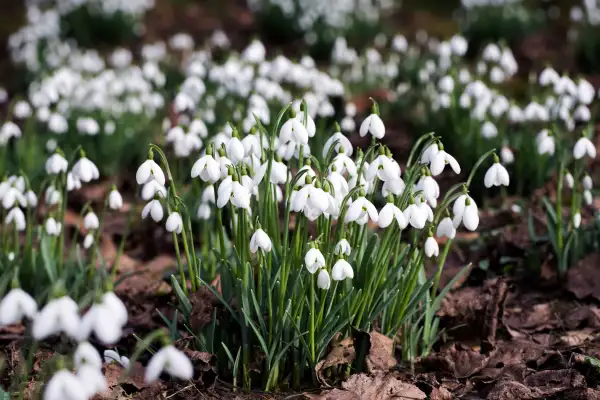Are Snowdrop Bulbs the Next Speculative Bubble?

In the early 1630s, the Dutch became obsessed with tulips. So obsessed that bulbs sold for 10 times the average annual salary of a skilled craftsman. At the peak of their popularity, bulbs were trading hands 10 times a day, in exchange for everything from two tons of butter to oxen to farmhouses. They were the big-ticket item of the Dutch Golden Age.
Until they weren't. In February 1637, the people of Haarlem decided they'd had enough and stopped buying tulips at auction, sparking a panic throughout the country that resulted in the devaluation of the bulb. The market evaporated, and the world witnessed the bursting of one of its first economic bubbles.
Fast forward to today. A snowdrop (Galanthus) known as "Golden Fleece" just sold on the U.K.'s eBay website for a record £1,390 ($2,150), surpassing the previous record of $1,115. Last weekend, a variety known as "Treasure Island" sold for more than £500 (about $775). In 2014, the naming rights to a snowdrop varietal, along with a bulb, sold for $2,500. While it's not nearly the same level of economic fervor the tulip generated—you can still get bulbs for less than $10—Galanthomania is definitely a thing.
What accounts for the tiny flower's big price tag? For one thing, the dainty bloom is tough as nails, often braving the cold and snow to become a harbinger of spring. They are also easy for horticulturists to split, and years of cross-pollination have led to more than 1,500 varietals. Though less popular in the United States, they are celebrated in United Kingdom with festivals and special events throughout the beginning of the year.
According the Carolyn Walker, owner of Carolyn's Shade Gardens in Bryn Mawr, Pa., there are fewer galanthophiles in the U.S., in part because of trade restrictions under the Convention on International Trade in Endangered Species (C.I.T.E.S.). Buying a snowdrop bulb or plant from overseas requires detailed forms and permits, which increases the price, and hassle, of a sale.
But that doesn't mean a galanthophile community hasn't taken root stateside. When Walker, one of the nation's few sellers, posts a new catalogue with snowdrop bulbs, she sells out in days. Though her bulbs typically top out at $89, she says that spending hundreds or thousands of dollars on a bulb makes sense if you consider it a collector's item.
People pay thousands of dollars for a bottle of wine, jewelry, or an item of designer clothing, she says. If you're not into designer clothes but you're really into Daphne's Scissors or Lady Beatrix Stanley, splurging makes sense.
Are we about to see another Tulip Mania? Probably not.
"One specific element of Tulip Mania in the 1600s was that tulips were not traded directly," said Markus Brunnermeier, a professor of economics at Princeton University. They were sold as forward contracts, or the promise of a bulb at a future date.
"In general, as long as speculation stays within a small group of (non-systemic) speculators, I would not be worried from a regulatory perspective," he says.
Whew.